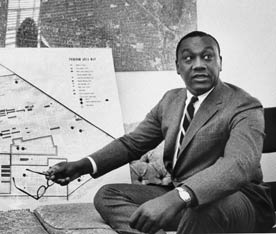What, then, makes organizing such a difficult activity? One factor is the feeling of hopelessness that seems pervasive when it comes to actually making a difference in the world (not in the clichéd, give-everything-away-to-the-homeless notion, but instead the idea that people can come together and fix their own problems). Cynicism and hopelessness are not, however, instinctive sentiments. They come about because people have tried to do something, failed, and been told repeatedly that they’ve failed, until this failure is accepted with a simple shrug of the shoulders and a determination not to fall for such foolish aspirations in the future. It’s as if any potential team that might emerge is hampered by abusive coaches set on destroying the idea that individuals working together can overcome remarkable odds. Such “coaches” are not difficult to find, and I ran into my fair share while organizing in Brooklyn.
Although to an extent this is a problem for folks of all social strata, it can be an insidious problem for low-income people who have had, at many turning points in their lives, someone reminding them that they have failed. By the time I met many of the tenants in Brooklyn, they had just suffered a string of devastating losses: a relative with a medical emergency forcing them to miss work; a boss that fired them for the missed days; a check that didn’t come as a result; a landlord that didn’t get that check and started an eviction process; an attorney that had tried to intimidate them in housing court. It’s not difficult to see why such a person would feel hopeless and under attack from all sides. Yet I found that this initial sense of hopelessness could be countered, and many of the tenants who came in seemingly without hope went on to become important community leaders and in turn helped support others in need.
What is the secret to facilitating this transformation? When I speak to groups about community organizing, this question invariably comes up. This is a question that is always on an organizer’s mind: there can be a general feeling that the people in the neighborhood where we’re working, or on the issues for which we’re fighting, or at the specific time period in which we’re organizing make it especially difficult to organize. So I’ve had African-Americans tell me about how they’ve got to be more like the Latinos and get together, and I’ve had Latinos tell me that if only they followed in the footsteps of African-Americans they’d finally see some progress. In organizing, there can be a tendency to fall into the “grass is always greener” trap.
But the question does always come up: How do you get people, especially vulnerable populations like undocumented immigrants—with whom I frequently work — to become active? When people ask me this during workshops, my answer is always the same: I don’t really do anything. I’m not being glib. When we’ve transformed people from intimidated spectators to active participants, it’s not simply because I said something special to them during a one-on-one conversation or because I gave them some bit of legal information that made them feel more comfortable (though these things may help). It has almost always been because they eventually met other undocumented immigrants in our organization who are acting despite their legal status. Often it is not the individual organizer but community members who are able to convince others to join. In organizing, sometimes the messenger is the message.
In this respect, one can think of a good community organizer as behaving like Crazy Glue. As people retreat into isolating activities such as watching television, an organizer’s job is to bring them out of their boxes and connect them with others who also are isolated. When an organizer can glue enough people together, they can begin the process of realizing common needs and aspirations and start to view others as friends and allies instead of enemies to distrust. They also become more powerful and can gain the confidence to confront abusive corporations, dishonest politicians, corrupt unions—indeed, any target they determine to be preventing them from achieving their goals and meeting their needs.




Comments